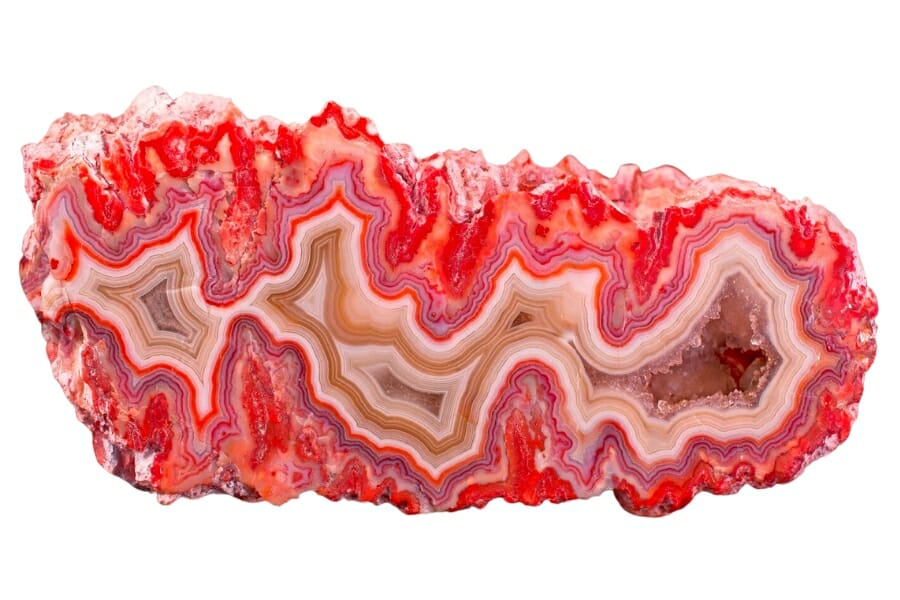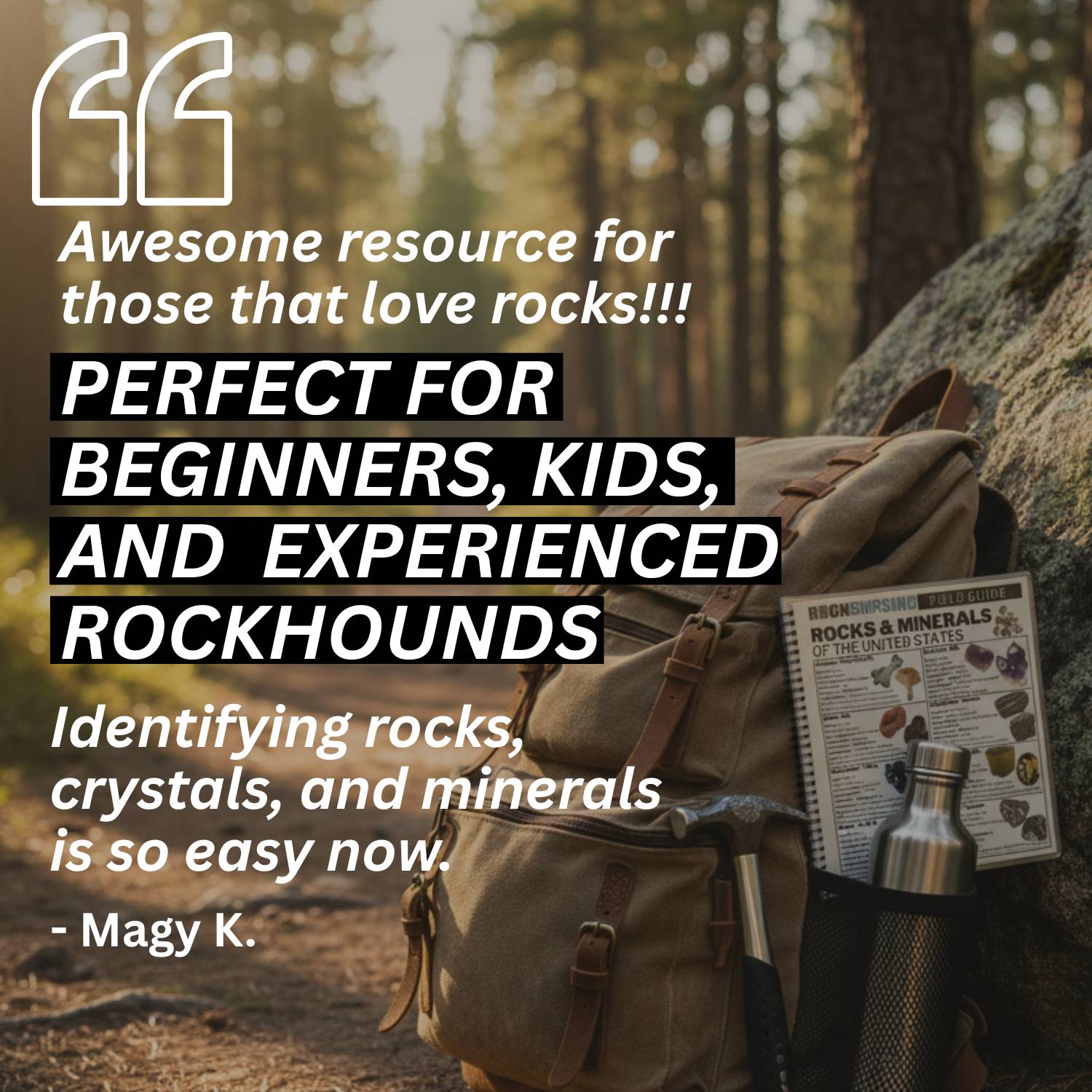Finding agates in Washington is a dream for anyone who loves hunting for beautiful rocks. If you have ever picked up a rock that looked plain on the outside but revealed bright colors inside, you already know the magic of agates.
From rugged beaches on the Pacific coast to the winding riverbeds of the Cascade Mountains, agates can be found in all kinds of places. They form in ancient volcanic rock, and over millions of years, water and minerals worked together to create bands of red, orange, yellow, and white.
Each stone is a small piece of natural art that no one else will ever own. That is what makes finding one so exciting. Whether you are a beginner with a backpack and curiosity, or an experienced collector with years of practice, Washington offers countless chances to explore.
Grab your gear and get ready for a real adventure into the world of agates.
What is Washington Agate?
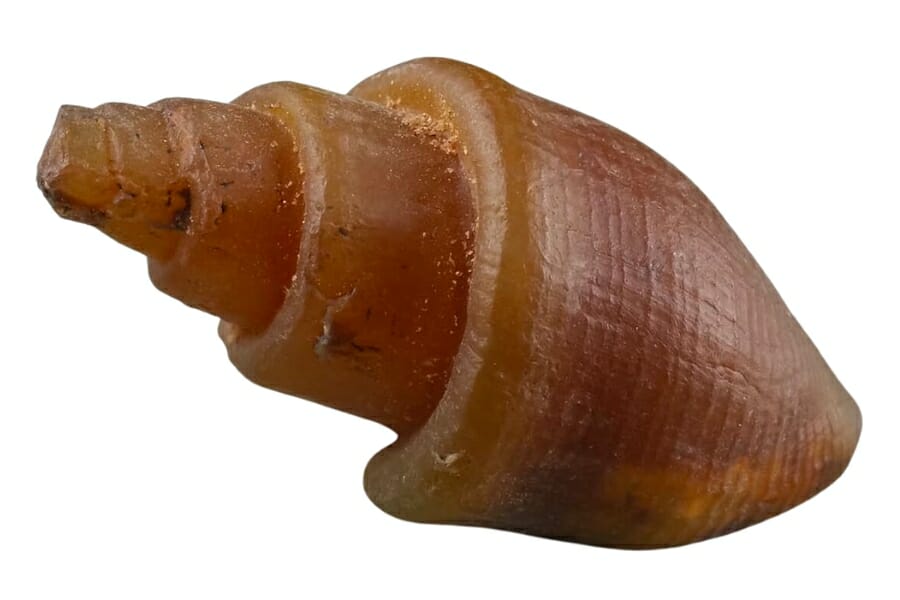
Agate is classified as a semi-precious gemstone. It’s known for its vibrant colors and the stunning, unique patterns that decorate its surface. These patterns, which look like bands or rings (sort of like the inside of a tree trunk), were formed by natural processes deep within the earth over thousands, even millions of years.
Agate is formed when microscopic mineral particles get trapped in pockets of rock, often from lava from volcanoes or in areas with lots of water like rivers or beaches. Over time, layer after layer of these minerals build up, creating the signature bands that this gem is known for.
You can find agate in many parts of the world, but some of the most notable locations include Brazil, Mexico, and certain parts of the United States, like Washington. So, whether you’re trekking by a riverside, strolling along a beach, or hiking near a dormant volcano, you might just stumble upon a piece of this beautiful gemstone. Agate hunting is an adventure in itself, so happy hunting!
If you’re curious to know all about how valuable agate is considering its gorgeous looks and its many uses, you can check out our article on that.
Blue Lace Agate
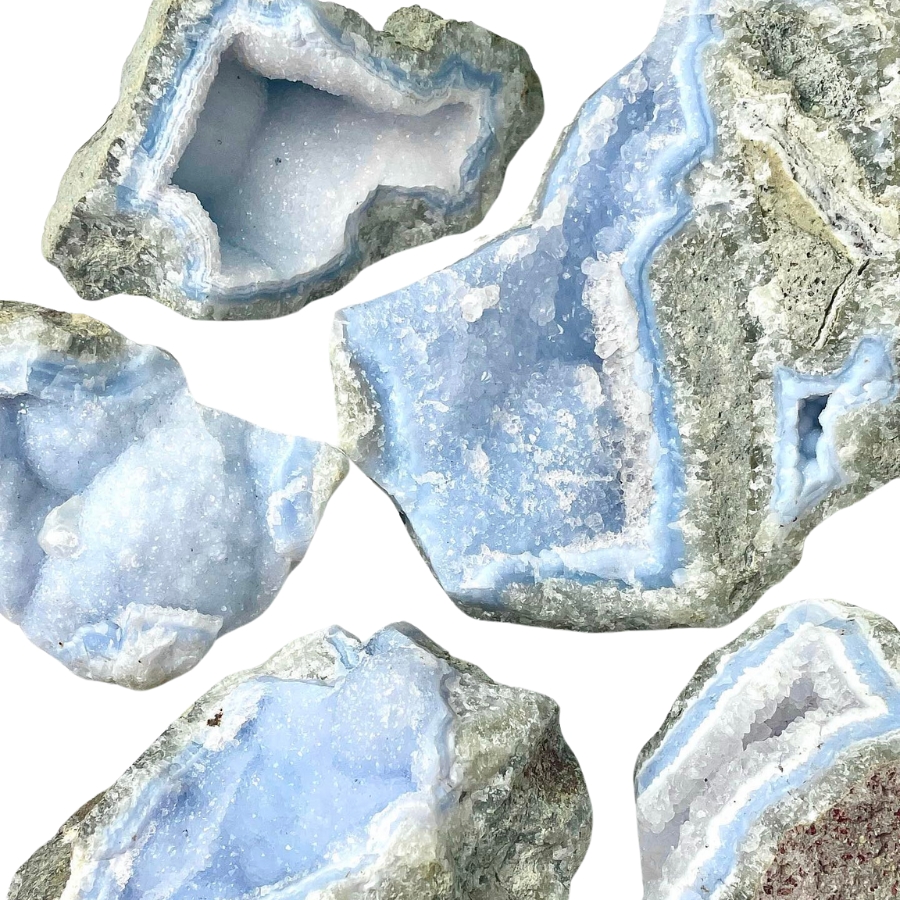
Blue lace agate is like the soft, sky-blue waves with lines that swirl and twist like delicate lace.
Its pattern comes from slow-forming layers of quartz, which create those beautiful, lace-like bands.
The bands of this agate type are often in shades of light blue, white, and sometimes a bit of grey. It’s different from other agates, which usually have more intense colors and stronger patterns.
The value of blue lace agate lies in its soft, tranquil look and the feeling of calm it brings. It’s often used in jewelry or as a decorative stone.
If you want REAL results finding incredible rocks and minerals you need one of these 👇👇👇
Finding the coolest rocks in isn’t luck, it's knowing what to look for. Thousands of your fellow rock hunters are already carrying Rock Chasing field guides. Maybe it's time you joined the community.
Lightweight, mud-proof, and packed with clear photos, it’s become the go-to tool for anyone interested discovering what’s hidden under our red dirt and what they've already found.
Join them, and make your next rockhounding trip actually pay off.
What makes it different:
- 📍 Find and identify 140 incredible crystals, rocks, gemstones, minerals, and geodes across the USA
- 🚙 Field-tested across America's rivers, ranchlands, mountains, and roadcuts
- 📘 Heavy duty laminated pages resist dust, sweat, and water
- 🧠 Zero fluff — just clear visuals and straight-to-the-point info
- ⭐ Rated 4.8★ by real collectors who actually use it in the field
Moss Agate
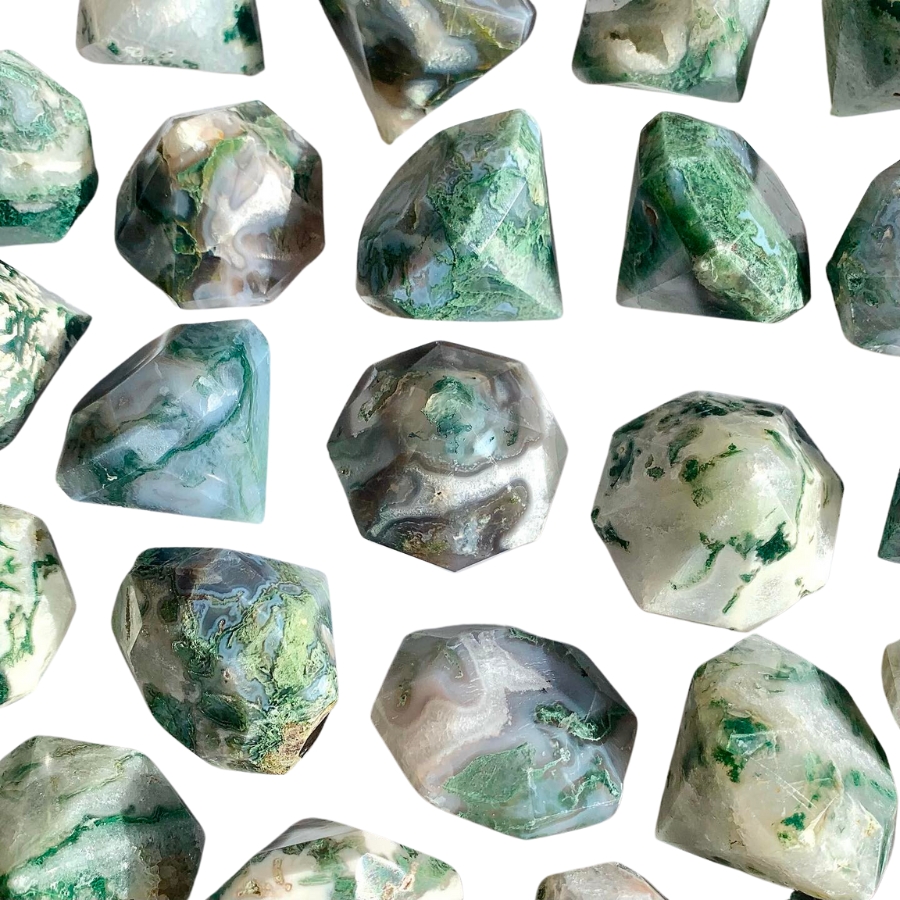
Instead of having the typical banding for which the different types of agates are known, moss agate has green inclusions that look like moss or trees.
These green patterns aren’t real plant material, though. They’re minerals like chlorite or iron oxide.
In some cultures, this type of agate is known as the “gardener’s stone” because of its green, plant-like appearance. It’s believed to help plants grow.
The price of moss agate can vary. It’s often quite affordable, but the more distinct and picturesque the green patterns, the more it might cost.
Fire Agate
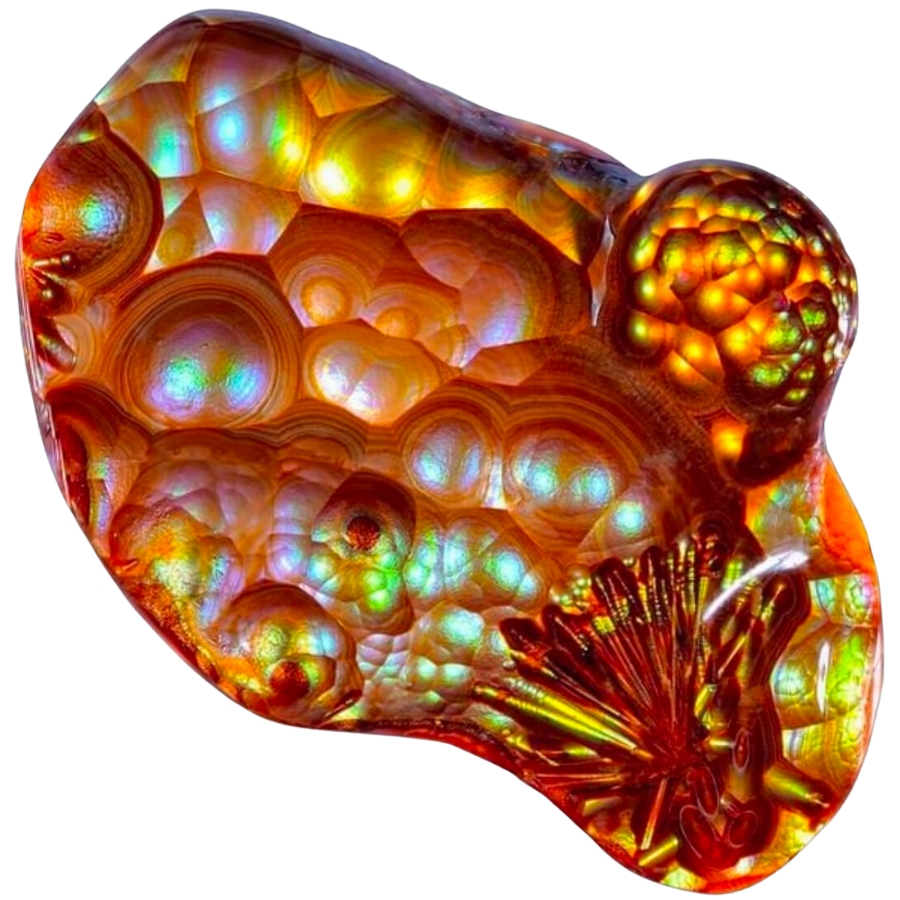
Fire agate is known for its incredible colors and the way it sparkles like fire. It’s got layers of silica and iron oxide that reflect light, creating a fiery effect.
When you look at fire agate, it’s like seeing flames trapped inside. Its colors can range from reds and oranges to greens and golds, all shimmering under the surface.
You might be wondering, “What is fire agate worth?” Well, its value comes from its rare beauty. The more color and sparkle, the more valuable the stone is.
Its fiery iridescence and lively play of color are used in jewelry pieces that are meant to stand out.
Dendritic Agate
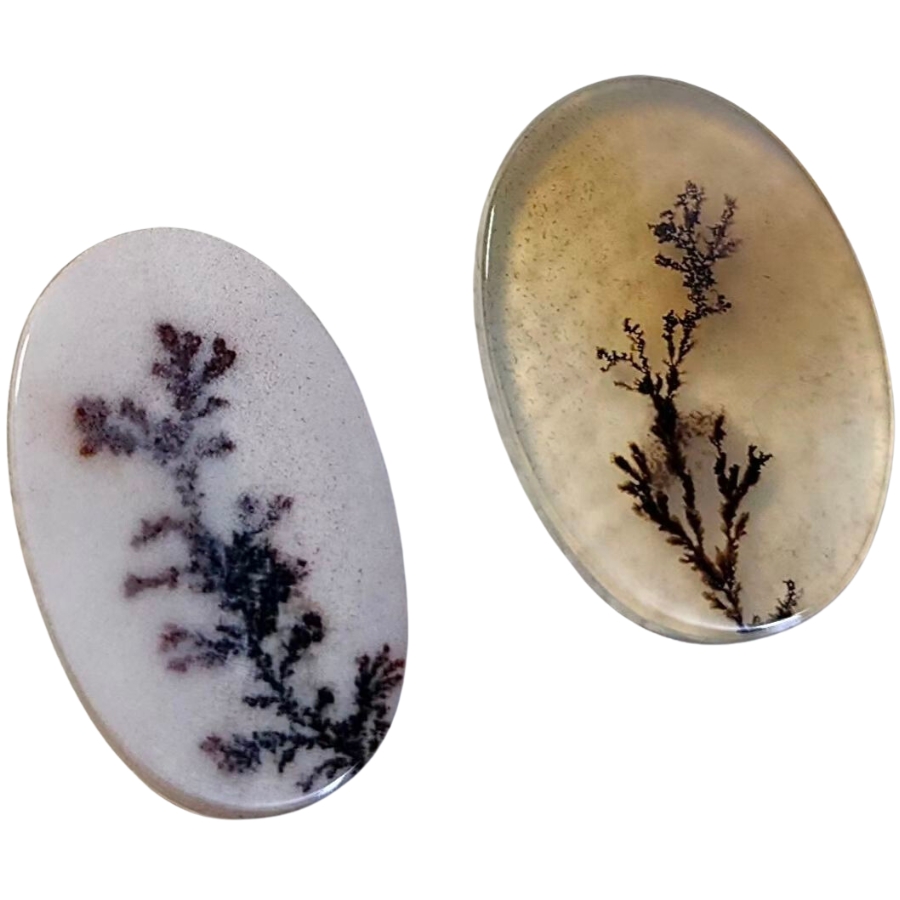
Dendritic agate is known for patterns that look like tiny trees or shrubs. Like moss agate, these patterns aren’t actual plants. They’re made of minerals, mostly manganese or iron oxides.
When you look at a dendritic agate, it’s like peering into a miniature forest or a frosty winter landscape.
The base of the stone is usually translucent to opaque, and the “dendrites”— those tree-like patterns— are often black or brown.
When it comes to how much dendritic agate is worth, it can vary. The more detailed and distinct the patterns are, the more it’s usually valued.
In some cultures, dendritic agate is believed to bring fullness and richness to life.
Crazy Lace Agate
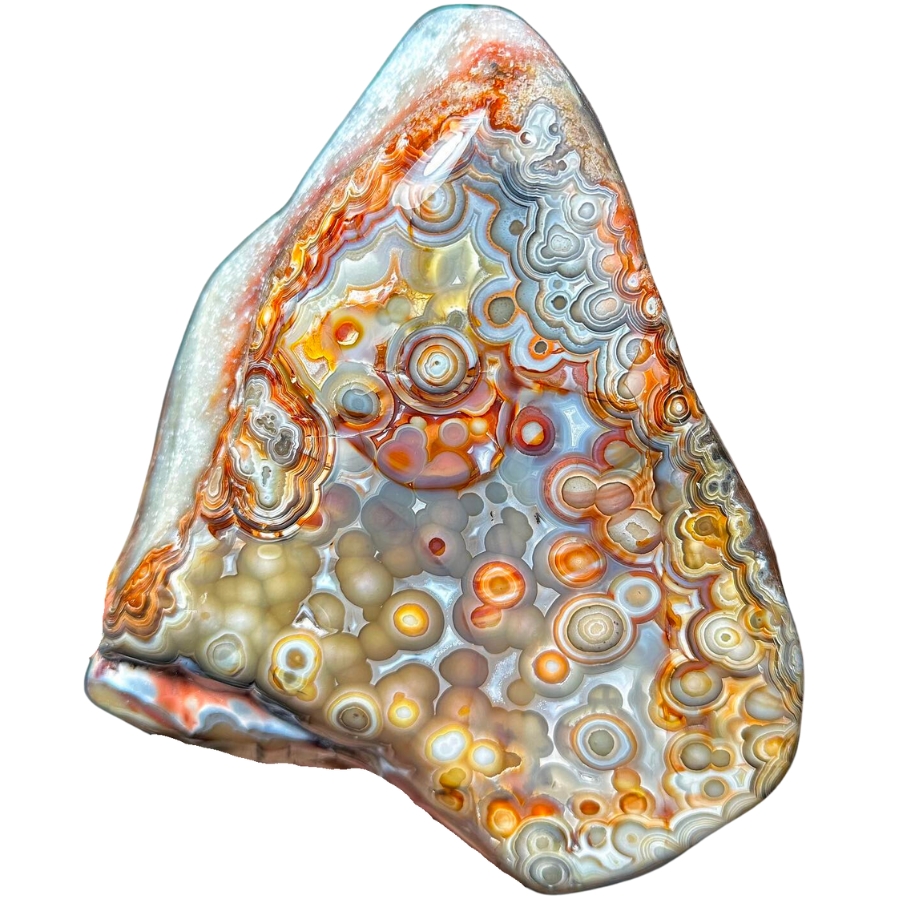
Crazy lace agate is like a party in a rock! It’s got swirls, circles, and all sorts of wild patterns dancing across it.
Its colors can be a mix of red, orange, yellow, and brown, and sometimes even a bit of gray or white.
What makes crazy lace agate stand out is its vibrant and complex patterns. No two pieces are the same. This distinctiveness is a big reason why it’s so valued.
Despite its wild and ‘crazy’ appearance, it’s sometimes called the “Laughter Stone” or “Happy Lace” because of the joy and positive vibes it’s believed to bring.
Laguna Agate

Laguna agate has incredibly sharp and fine banding. It has layers of red, orange, pink, yellow, and sometimes even purple and white all stacked in neat, tight bands.
These bands can form eye-catching patterns, like swirls, loops, and even landscapes.
The different colors of its bands come from various minerals present in the water at the time of its formation.
Laguna agate is considered one of the finest agates in the world due to its exceptional banding. This high regard among agate varieties makes it a prized possession for collectors.
Condor Agate

Condor agate is a real standout. It’s known for its bright, vivid colors and complex patterns.
It has reds, oranges, yellows, and sometimes even blues and greens all swirling together. These colors form in bands or in more random, artistic patterns.
The intensity and variety of its colors is what makes condor agate so special. It’s often used by artists and craftsmen who want to make a statement with their work.
Condor agate’s bold colors and patterns can turn a simple piece of jewelry or art into something really eye-catching.
Fortification Agate (Banded Agate)
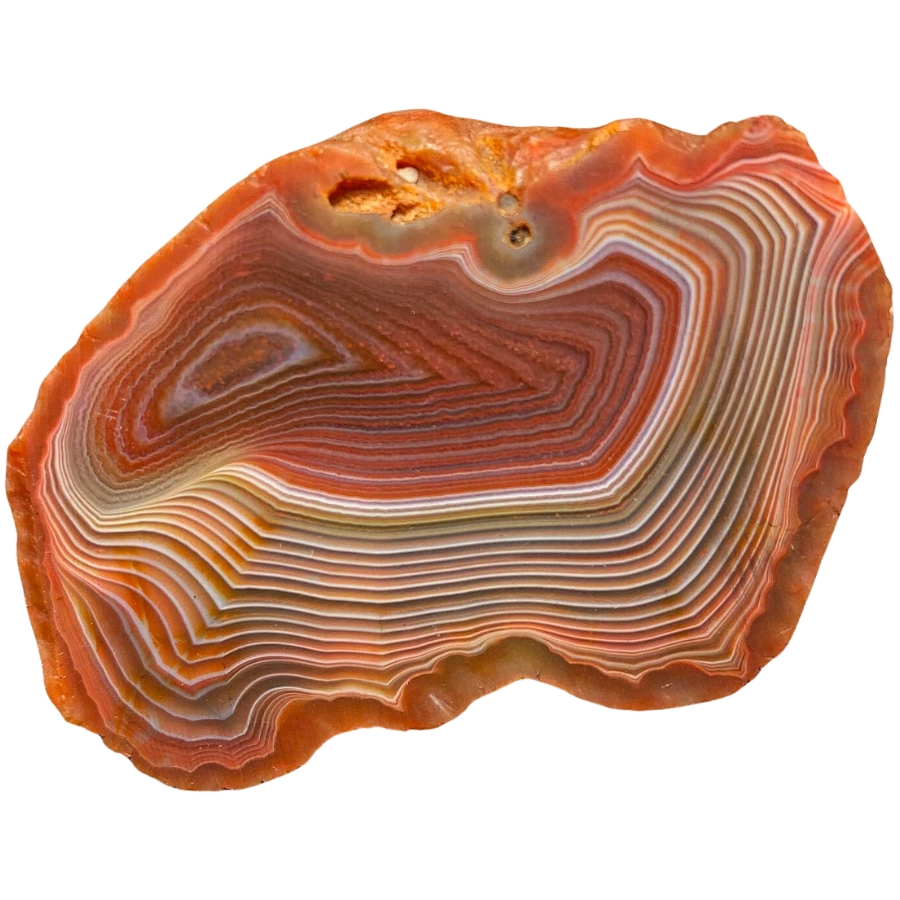
Fortification agate gets its name because the patterns inside it look like the aerial view of a fortified city.
Imagine seeing bands of color forming shapes that look like walls, with sharp angles and curves. They are usually in different colors, making each layer stand out.
If fortification agate is valuable, it’s because of its distinct patterns and colors. Its unique look makes it sought after for jewelry and as a collector’s item.
The clearer and more defined the patterns, the more valuable the stone can be. Some people also believe it can help with relaxation and calmness.
Iris Agate
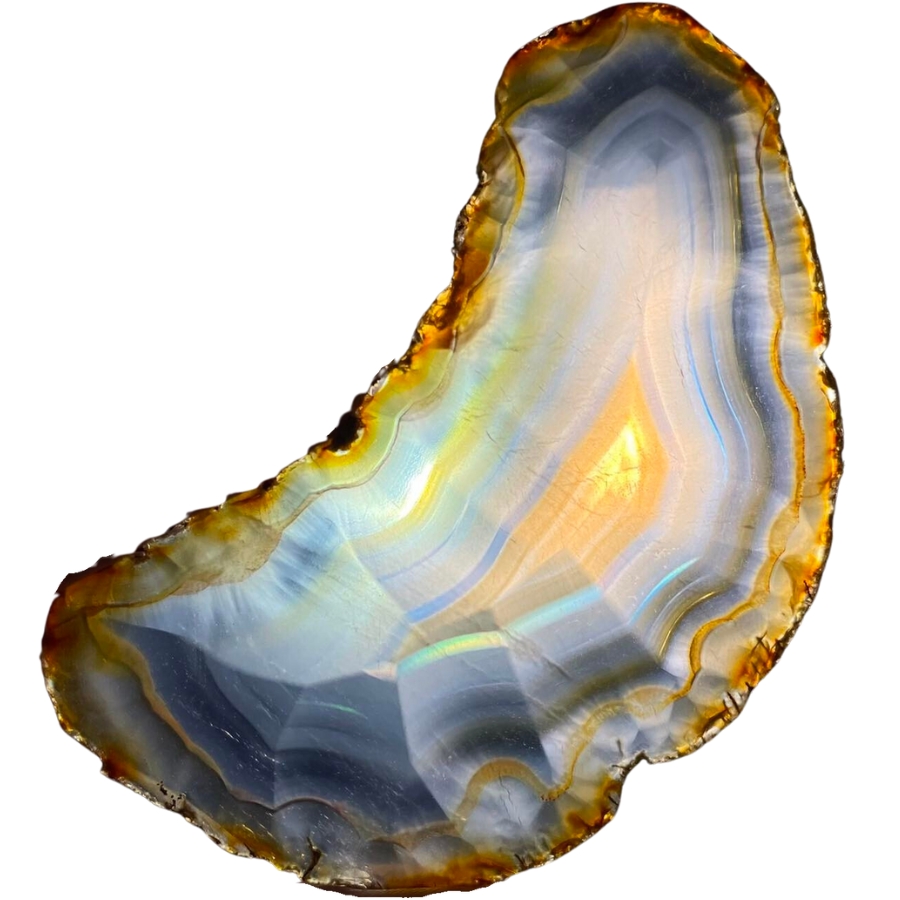
Iris agate looks like a regular agate at first, but when you hold it up to the light, something amazing happens. It shows all these rainbow colors, like light passing through a prism.
This is because it has very thin layers of silica, and when light hits these layers, it splits into all the colors of the rainbow.
The formation of iris agate is similar to other agates, but its layers are super thin, which is what creates the rainbow effect.
The value of iris agate comes from its unique ability to show these colors. In the past, people even used to think it had magical properties because of the way it showed colors. They saw it as a stone of good luck and wonder.
Plume Agate
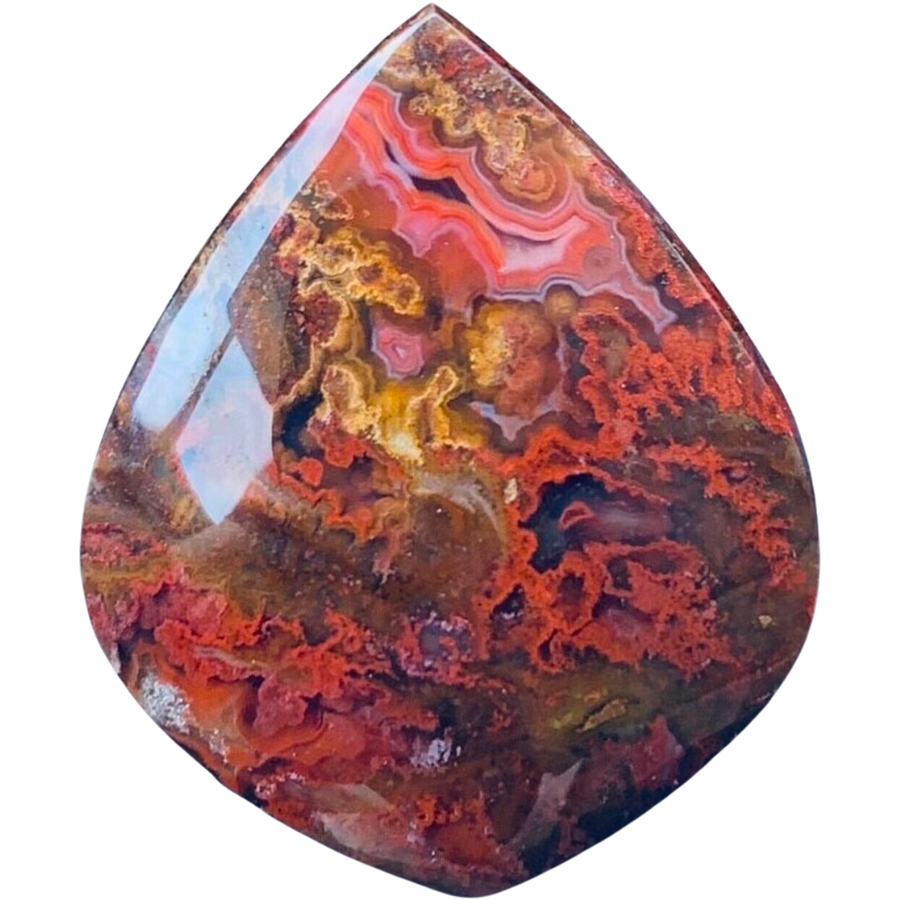
Plume agate gets its name from its patterns that look like soft, feathery plumes. These plumes can be in all sorts of colors: red, black, green, or yellow, set against a translucent or opaque background.
The way these plumes seem to float in the stone makes it look like a frozen underwater scene or like feathers caught in a breeze.
The plumes are made of minerals like manganese or iron oxide, which get trapped in the silica during the agate’s formation and create the feathery patterns.
The price of plume agate can vary depending on how clear and intricate the patterns are. The more detailed and colorful the plumes, the more the stone is usually worth.
Picture Agate (Scenic Agate)
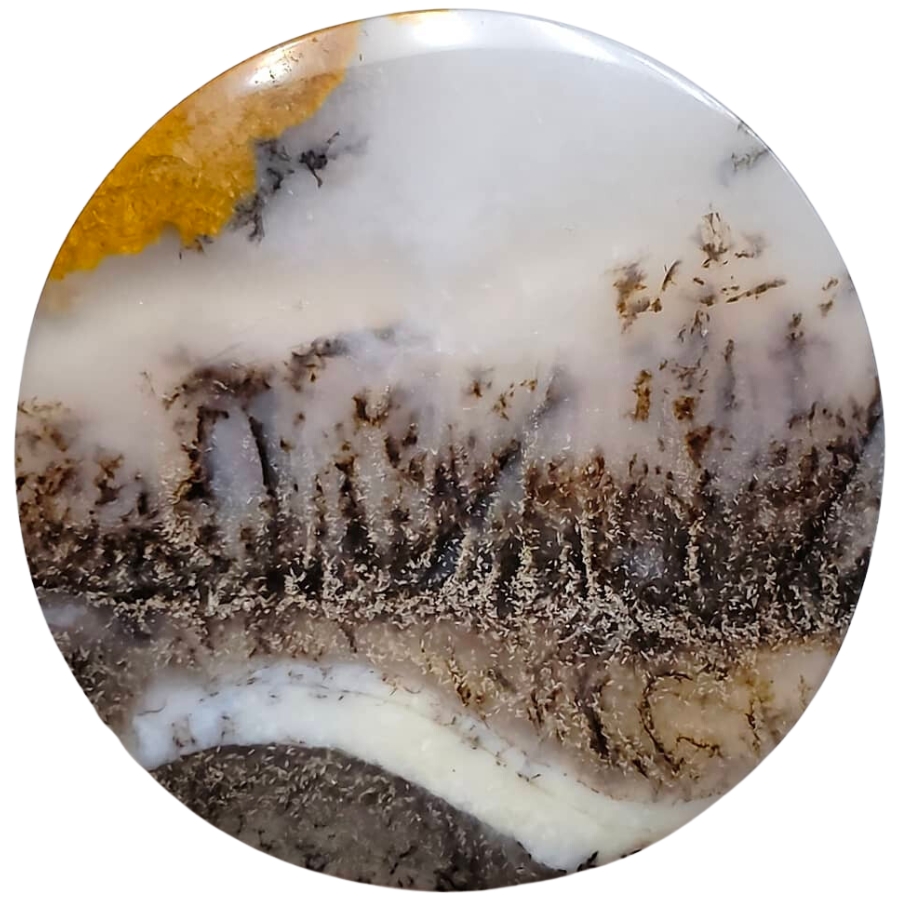
Picture agate is like a snapshot of nature captured in stone because it looks like it has pictures or scenes right inside it.
These “pictures” are actually natural patterns that resemble landscapes, mountains, trees, or even skies. They are usually in different shades of brown, white, and gray against a more translucent background.
The different patterns in picture agate or what’s also called scenic agate are made by various minerals in the water filled with silica that forms it.
If you’re thinking, “What is picture agate worth?“, its value comes from how distinct, clear, and detailed the natural “pictures” are.
Turritella Agate
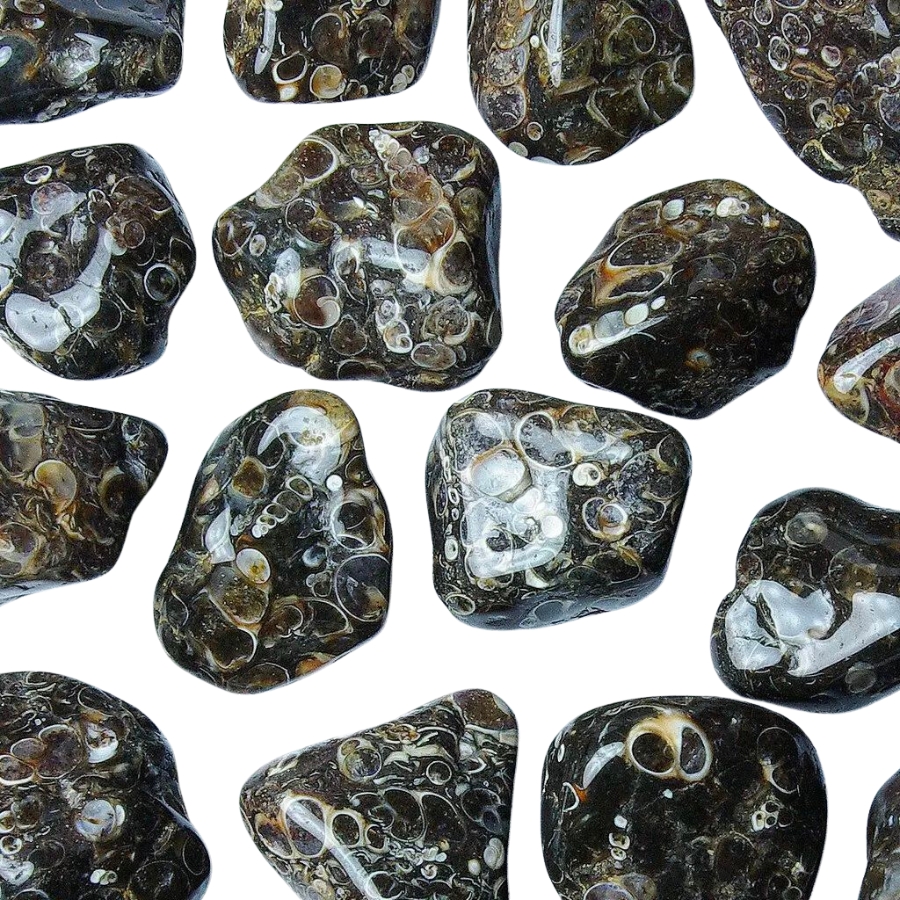
Turritella agate is not your typical agate because it’s full of fossilized snail shells! The shells belong to a creature called Turritella, a type of sea snail.
These shells are tightly packed and create a pattern that looks like a bunch of tiny, swirling towers. The background of the agate is usually a dark, earthy color, which makes the white or cream-colored snail shells really pop.
Over millions of years, these snail shells got buried in sediment and eventually became fossilized. As time went on, silica-rich water flowed through the sediment, turning it into the agate we see today.
The value of turritella agate comes from its unique blend of geology and history. More than a pretty stone, it’s a piece of ancient life preserved in rock.
Fairburn Agate
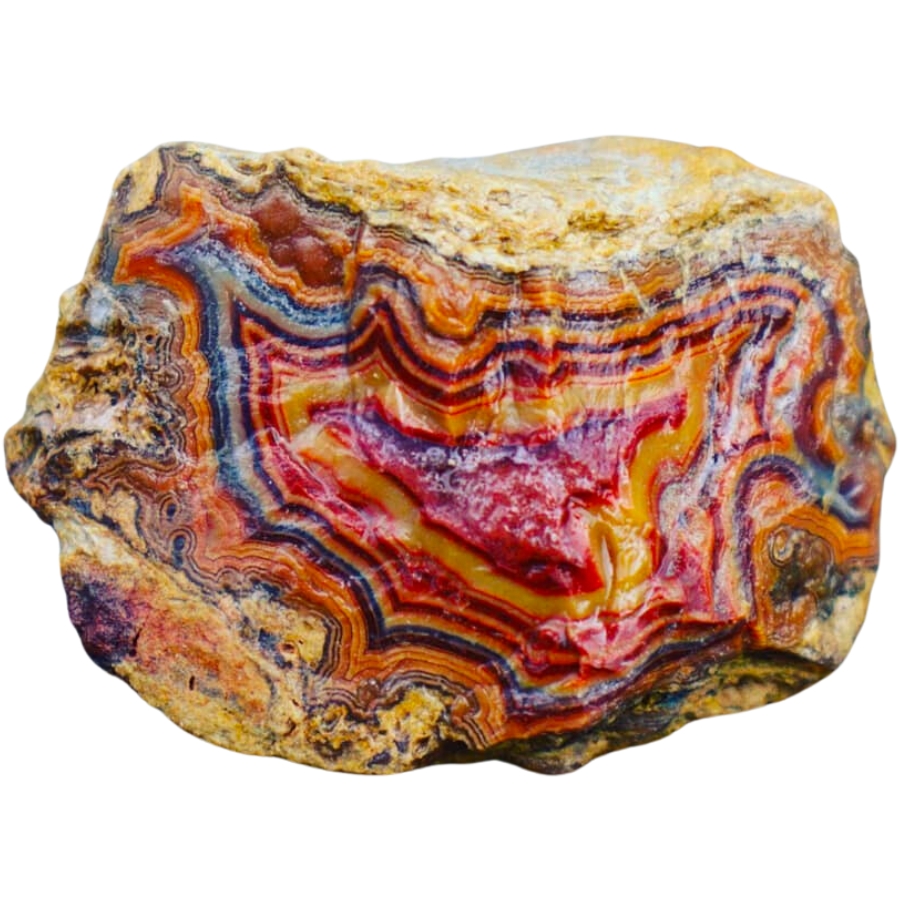
Known for its intricate patterns and bold colors, Fairburn agate is another fascinating type of agate. It usually has bands and swirls of different colors like red, yellow, orange, brown, and sometimes even pink or purple.
What’s special about these patterns is they often look like they’re in layers, creating a 3D effect. It’s like looking at a landscape made of stone.
It’s named after a place called Fairburn in South Dakota. This gives a clue about where it was first discovered.
People value Fairburn agate for the skill it takes to cut and polish it, which makes the patterns and colors really stand out.
Sagenite Agate
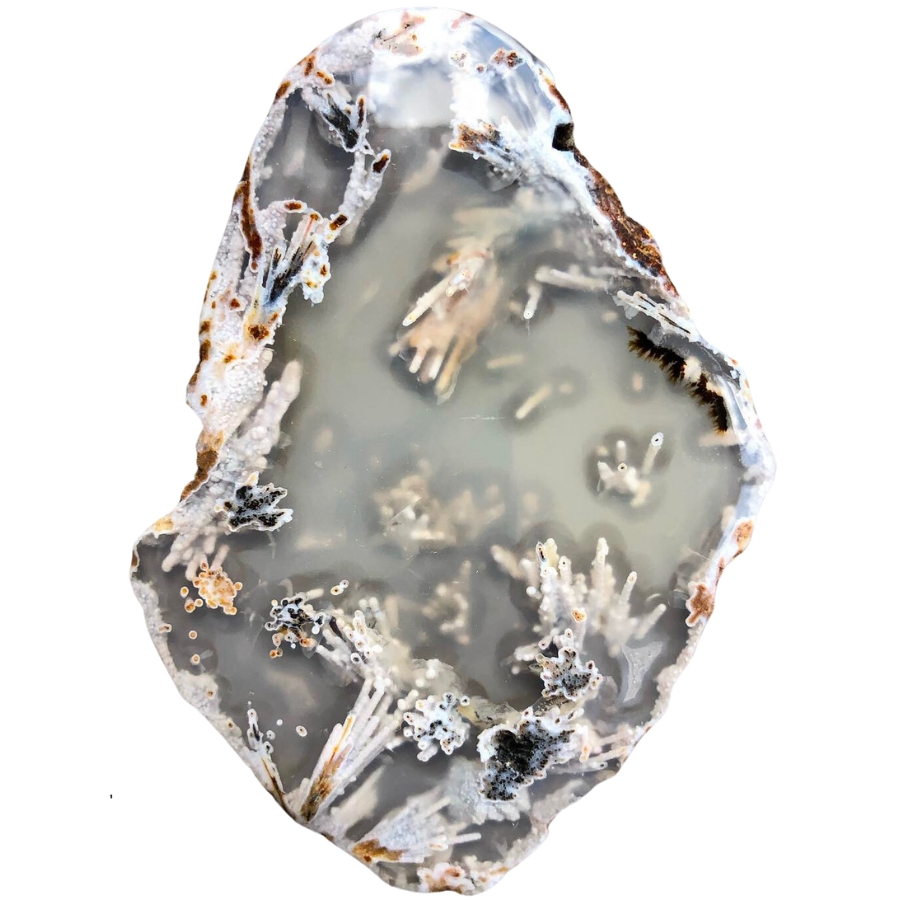
Sagenite agate has needle-like inclusions that look like tiny sprays of crystals inside it. They can be gold, silver, black, or even green, and they spread out in all directions, creating an amazing pattern.
The base of the agate is usually translucent, which lets you see these intricate needle patterns clearly.
These patterns are actually other minerals, like rutile or goethite, that get trapped inside the forming agate. These minerals grow in a crystal shape, looking like needles or hair.
Sagenite agate is often used in jewelry and other decorative items, with some people thinking that its needle patterns look like fireworks or starbursts.
Tree Agate

Tree agate, as its name suggests, looks like it’s got tiny trees or branches inside it. These tree-like patterns are usually green and spread out against a white or light gray background.
The green patterns aren’t actual trees, though. They’re made of minerals like chlorite or manganese.
Each piece of tree agate is different. You won’t find two that are exactly the same. It’s valued for its looks and it’s often used in jewelry and decorations.
The key factors in our recommendations are:
- The deep experience and understanding of our team about the area
- Recommendations from local groups and clubs
- How easy it is to get the a particular location
- Safety and potential hazards when collecting
- Weighing private and public locations
- The ability for both experienced and novice agate enthusiasts to find great samples
With these factors in mind we’ve been able to put together a fantastic list that just about anyone can use!
Kids. Beginners. Pros. Doesn’t matter. This book has become the go-to because it works for everyone.
Magy put it bluntly: “Identify rocks, crystals and minerals is so easy now!”
That’s not by accident, the photos are crisp, the callouts are simple, and the design is rugged enough to throw in a backpack without worrying. Whether it’s your first geode or your hundredth, this guide keeps the fun part simple: finding more treasures.
The Best Spots To Find Agates in Washington
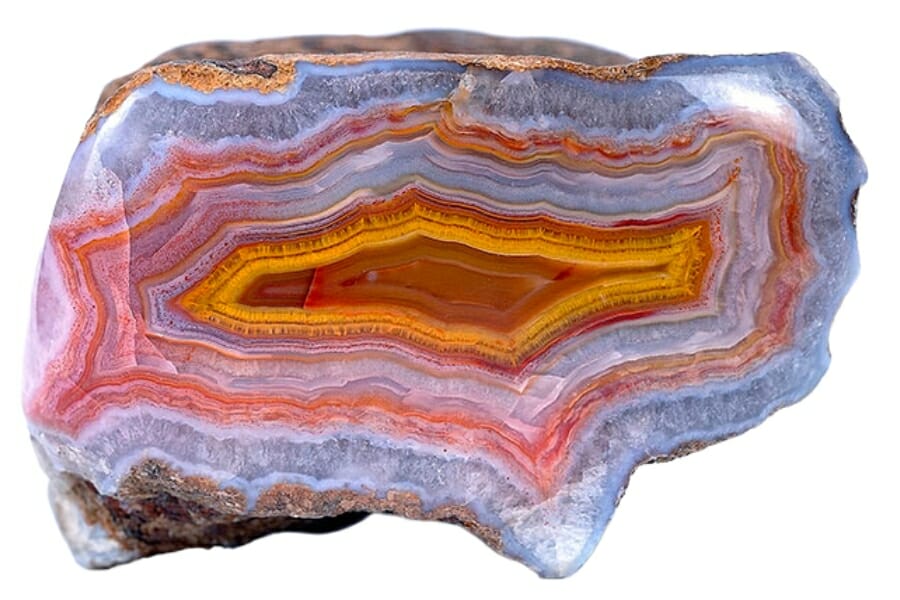
You can also read about the different gem mining sites in Washington in case you’re planning on finding other gemstones during your visit here. But if you want recommendations focused on agate hunting alone, here are our top suggestions:
Always Confirm Access and Collection Rules!
Before heading out to any of the locations on our list you need to confirm access requirements and collection rules for both public and private locations directly with the location. We haven’t personally verified every location and the access requirements and collection rules often change without notice.
Many of the locations we mention will not allow collecting but are still great places for those who love to find beautiful rocks and minerals in the wild without keeping them. We also can’t guarantee you will find anything in these locations since they are constantly changing.
Always get updated information directly from the source ahead of time to ensure responsible rockhounding. If you want even more current options it’s always a good idea to contact local rock and mineral clubs and groups
Dungeness River
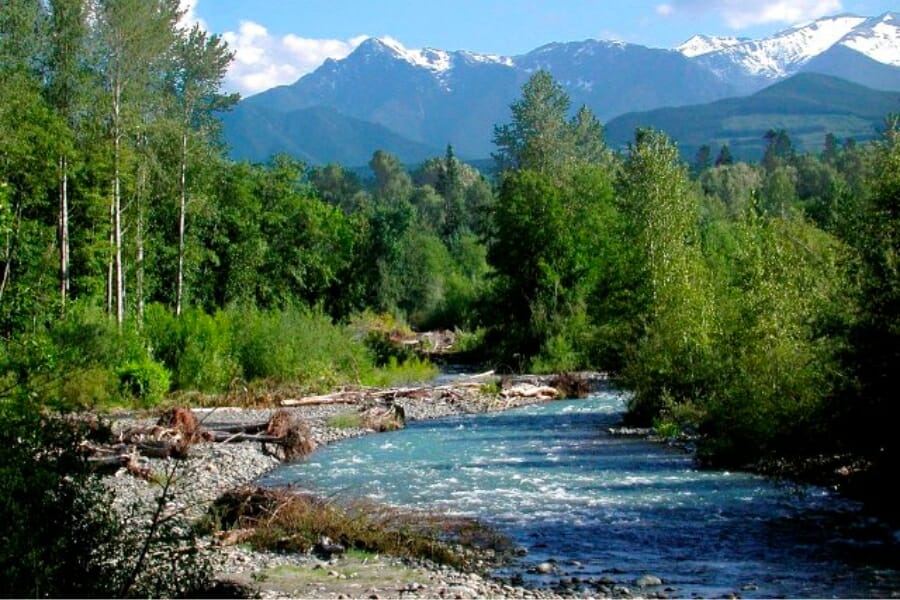
Dungeness River flows through the north part of the Olympic Peninsula, and its source is high up in the Olympic Mountains. It travels about 32 miles before it empties into the Strait of Juan de Fuca. The terrain around it varies a lot, with mountain landscapes, lush forests, and even some farmland.
Geologically, the area around the Dungeness River is super interesting. It’s got a mix of sedimentary, metamorphic, and igneous rocks. There’s been a lot of glacial activity in the past, which has shaped the land and the river in cool ways. Of course, this river is a great spot to find agates.
The good news is that getting here is pretty easy. There are lots of trails and parks along the river that you can visit. But before starting your journey, make sure to check first Washington’s updated collecting guidelines to ensure your compliance with it from the get-go.
Where we found agates in Dungeness River
You can find agate in the gravels of the Dungeness River, so make sure you have the proper gear and equipment to make your search easier.
Cowlitz County
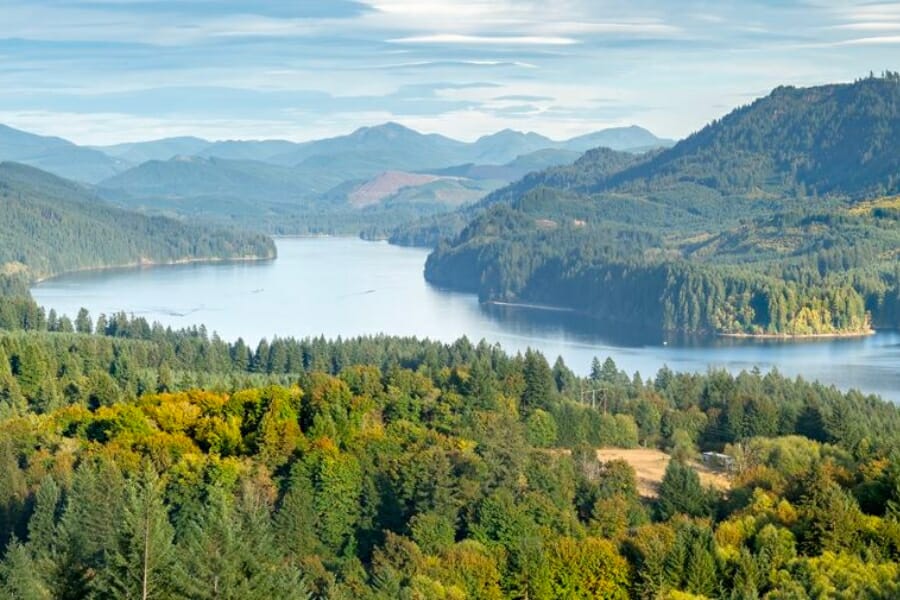
Cowlitz County is a fun place to visit for any kind of explorer. It’s kind of in between two big cities, Portland and Seattle, so it’s pretty easy to get to. This county is home to a bunch of different landscapes, from lowland valleys and rivers to forests and mountains. Its highest point is at the top of Mount St. Helens.
When it comes to rocks and geology, Cowlitz County has a lot to offer. You can find evidence of volcanic activity and lots of cool rock formations here. Over time, rivers in the area have carved through the land, creating a mix of terrain that’s pretty awesome to explore.
And here’s the exciting part: Cowlitz County is a great place to find agate! So much so that it has lots of prime areas you can visit and explore to find these gemstones.
Where we found agates in Cowlitz County
Cowlitz County is pretty endowed with different spots known for bearing agates, such as:
- Cloverdale area
- Hills to the east of the Kalama area
- The base of cliffs in Kelso
- Northeast on Cemetery Road on the cliff
- Green Mountain Road to Johnson Road
- Silverlake area
Columbia River
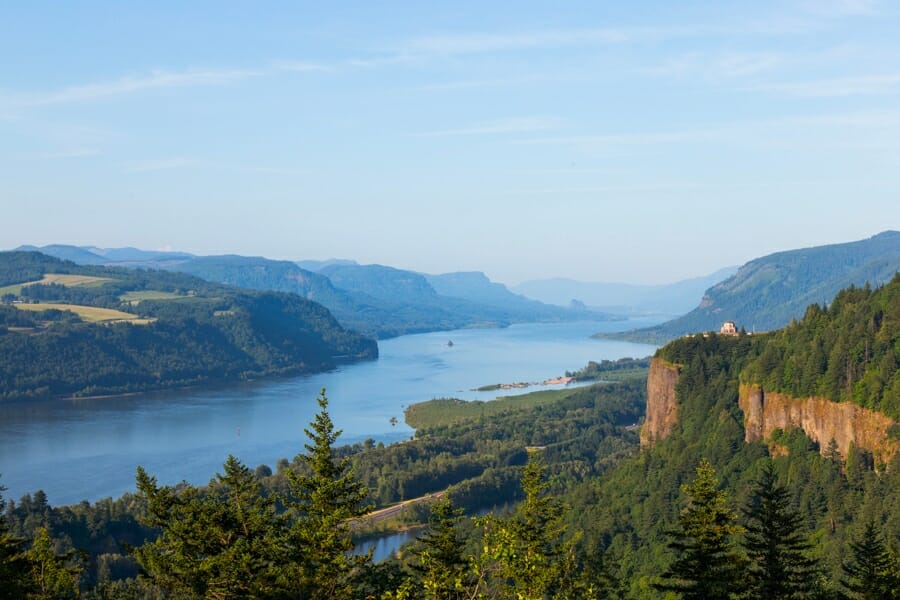
Columbia River is an important body of water, not just in Washington, but in the whole United States. As the largest river in the Pacific Northwest, it starts in Canada before it flows all the way down and forms much of the border between Washington and Oregon. It eventually finds its way to the Pacific Ocean.
Overall, its waters’ journey covers over 1,200 miles, passing through all kinds of different landscapes, like steep gorges, mountains, and plateaus. The area around the river has experienced a lot of volcanic activity in the past. Over millions of years, it has carved through layers of lava rock, creating the Columbia River Gorge.
Getting here is pretty easy since it’s so big and passes through several cities and towns. Simply put, it would nearly be impossible to miss it!
Where we found agates in the Columbia River
Explore the east side of the Columbia River as well as its area gravels to find stunning specimens of agate.
Kittitas County
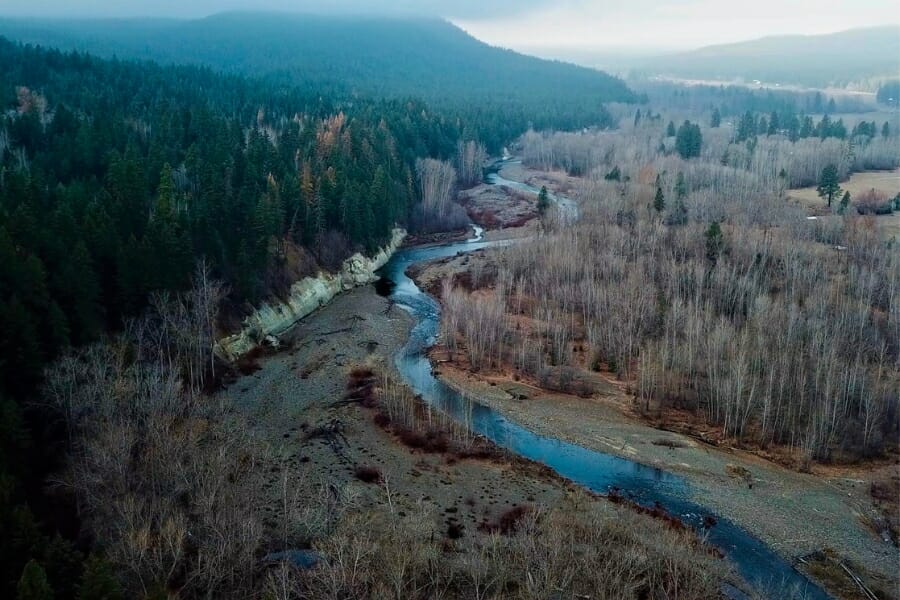
Kittitas County stretches all the way from the Cascade Mountains in the west to the Columbia River Basin in the east. So when you go here, you can expect to see everything— from mountain peaks and lush forests to wide, open plains.
When it comes to geology, Kittitas County has a rich history. Its western part is known for its igneous and metamorphic rocks, which formed from volcanic activity and high heat and pressure over millions of years. In contrast, ita eastern part has sedimentary rocks, which were laid down over time in layers.
Of course, Kittitas County is a great spot for finding agate! With its diverse geological history, conditions have been just right for these colorful, banded rocks to form. What’s more is that, since it’s smack in the middle of our state, it’s easy to get to from anywhere.
Where we found agates in Kittitas County
We recommend exploring the following areas of Kittitas County to find Washington agates:
- Cle Elum area
- Middle Fork of the Teanaway River
- Surrounding area of Ryepatch
- Stream beds, washes, and talus slopes of Liberty
- Hills in the Ellensburg area
- Williams Creek
- Crystal Mountain
- Table Mountain
Ocean Park

Ocean Park is located on the Long Beach Peninsula, so it’s right by the Pacific Ocean. That means you can expect to see long stretches of sandy beaches, which are perfect for relaxing walks or even horseback riding!
The terrain around Ocean Park is pretty flat since it’s on the coast. But don’t let that fool you— its geology is still super interesting! Over thousands of years, ocean waves and wind have shifted and shaped the land, creating dunes and other unique features. You’ll find a mix of sandy soil and rocky areas.
Despite its fascinating landscapes, getting here is a breeze. It’s about a 3-hour drive from Seattle, and there’s plenty of signage along the way. Once you’re here, you’ll find lots of parking and easy access to the beach.
Where we found agates in Ocean Park
You can find agate in the beach gravels of Ocean Park and Long Beach in general. These beautiful, colorful gems are often washed up by the ocean, especially after a storm.
Other Great Places To Find Agates in Washington
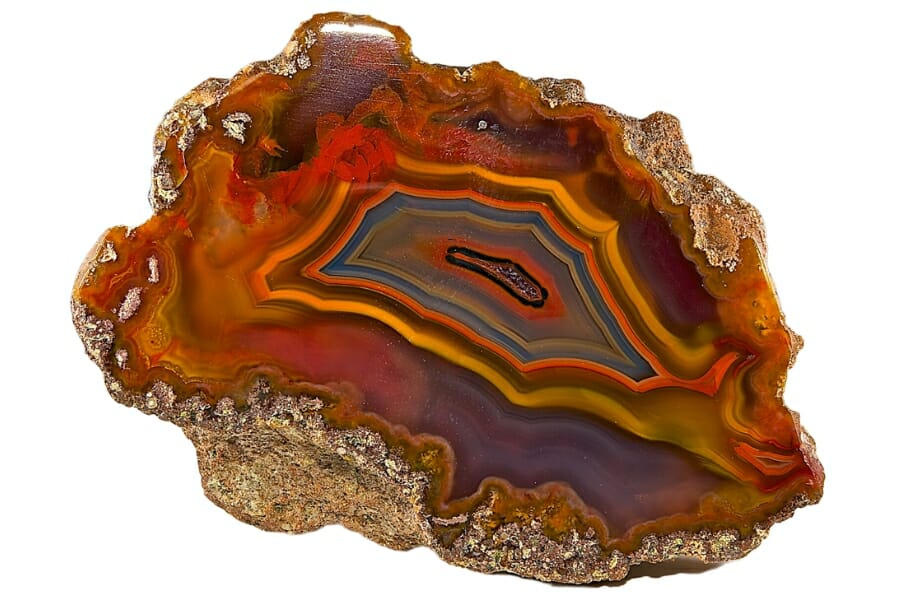
Aside from our top recommendations, Washington abounds in other agate-bearing prime areas that you can explore. They’re listed by county below so you can easily use this guide for you itinerary planning.
Our recommendations by county
| County | Location |
| Chelan | Railroad Creek to Holden |
| Clallam | Agate Beach |
| Clallam | Crescent Beach |
| Clallam | La Push beach gravels |
| Clallam | Soleduck River gravels |
| Clallam | Upper Soleduck River in Sappho |
| Clark | Bell Mountain Mine |
| Clark | Washougal area |
| Grays Harbor | Beaches and regional stream gravels in Moclips |
| Grays Harbor | Grayland area beaches |
| Grays Harbor | Westport area ocean beaches |
| Grays Harbor | Regional road cuts and stream banks in Oakville |
| Island | Whidbey Island beaches |
| Jefferson | Countywide along Pacific Coast beaches |
| Jefferson | Beach gravels of Kalaloch |
| Jefferson | Beach gravels of Queets |
| Jefferson | Shoreline of Quimper Peninsula to Fort Worden State Park |
| Klickitat | Warwich area |
| Klickitat | Rattlesnake Creek |
| Klickitat | Area adjacent to border of Yakima County |
| Klickitat | Swale Creek |
| Lewis | Lucas Creek |
| Lewis | Regional stream gravels and cut banks in Centralia |
| Lewis | North Fork of Chehalis |
| Lewis | Stream gravels in Mary’s Corner |
| Lewis | Farm fields in the drainage region of Mary’s Corner |
| Lewis | Regional stream banks and gravels of Pe Ell |
| Pacific | Stream bed and bank along highway in Raymond |
| Pacific | Stream bed and banks in Greens Creek |
| Pacific | Creek banks, gravels, and road cuts of the Willapa Hills |
| Pacific | Gravels of the Willapa River |
| Skamania | Gifford Pinchot National Forest at Table Mountain |
| Thurston | Coal mine spoil piles in Bucoda |
Additional areas you can find agates
In case you’re exploring a generally wide or broad location, you should pay close attention to the following areas where agates are usually found:
Beaches
Beaches, especially the ones in our state, are awesome places for finding agates, and it’s all about the power of water! When rivers flow down from the mountains, they carry with them all sorts of rocks and minerals, including agates. As these rivers meet the ocean, they drop these treasures onto the beach.
The waves also play a part as they’re really good at sorting rocks. The steady rolling of the waves washes away the lighter sand and leaves the heavier stones, like agates, behind.
Streams and Creeks
Streams and creeks are also fantastic places to find agates, and it’s all because of how these rocks are formed and moved. These gemstones are formed in volcanic rocks, and guess what? Washington has a lot of volcanic history.
These waterways act like natural conveyor belts, moving rocks from higher places to lower ones. As the water flows, it washes away smaller, lighter materials, leaving behind heavier stuff, including agates. That’s why you’ll often find them in gravel bars in streams and creeks.
Rivers and River Banks
Over time, rain, wind, and natural processes break down volcanic rocks, where agates are formed. Then, rivers pick up the pieces, including agates, and move them downstream.
The moving water of rivers sorts the rocks it carries. Lighter materials get washed away, but heavier ones, like agates, get left behind. Rivers in Washington, like the Dungeness and Columbia Rivers that we’ve discussed above, are famous for their agates.
Common Agate-Hunting Questions
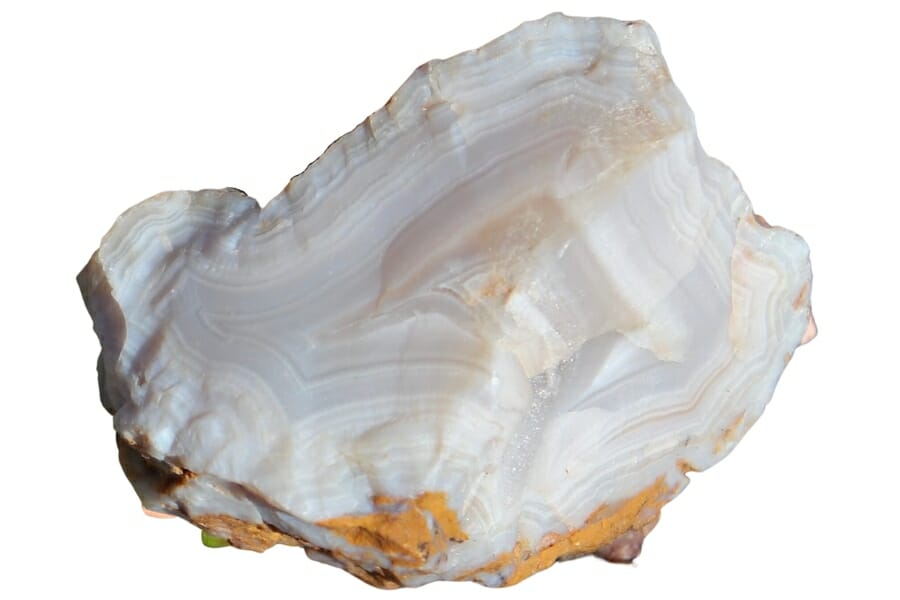
Before you head out here, we’ll answer the most common question when it comes to agate hunting:
Is it illegal to collect agate in Washington?
Collecting agate in Washington is legal as long as you don’t cause any injury or damage, based on our state’s local collecting guidelines. Also, familiarize yourself with any rules and regulations in place in the specific areas you will visit. Lastly, secure any necessary documentation, like permits, before starting your exploration.
The Best Places To Buy Agates In Washington
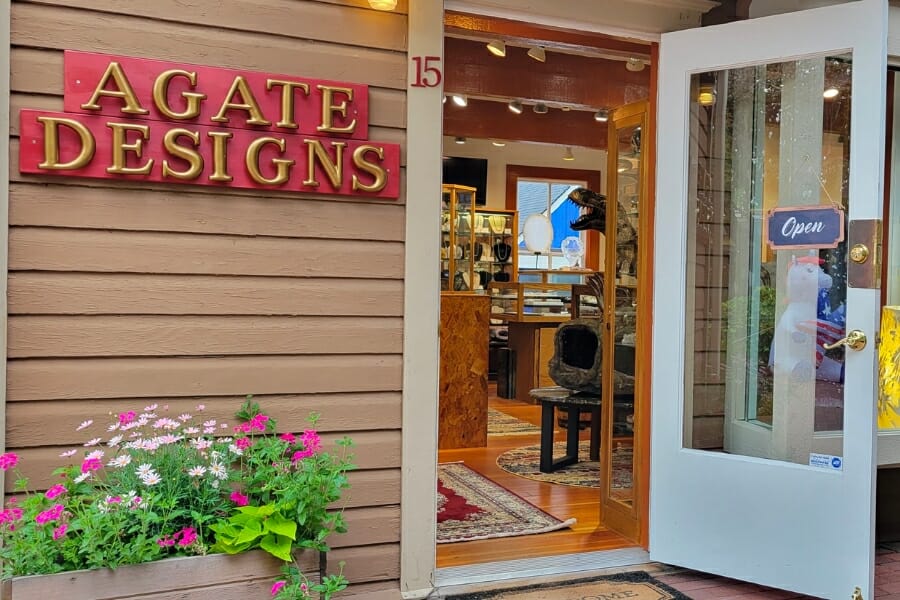
Some collectors prefer paying a visit to trusted local stores in different states to find unique specimens with specific qualities that they are looking for. If you’re one of them, here are some of our recommended agate shops in our state:
- Agate Designs – 317 NW Gilman Blvd #15, Issaquah, WA 98027
- Crystallography Gems – 650 S Orcas St #218, Seattle, WA 98108
- Earthlight Rocks and Gems – 7713 Center Blvd SE #180, Snoqualmie, WA 98065
- MJ Rocks and Gems – 16128 356th Ave SE, Sultan, WA 98294
- Wild Earth Rocks – 11607 State Route 302 NW, Suite B, Gig Harbor, WA 98329
If you have any recommendations for our list please leave a comment below!

